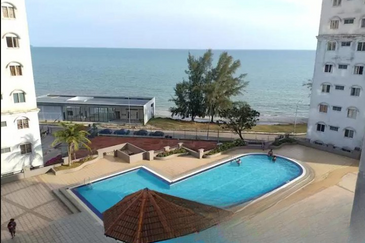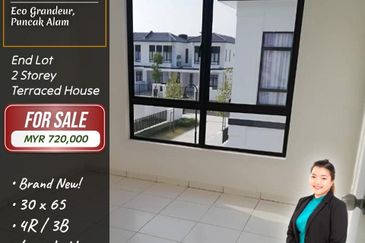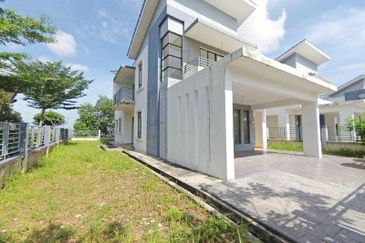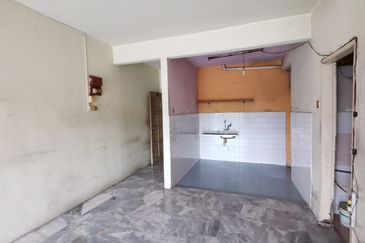
 THE Chinese zodiac is based on a 12-year cycle, with each year in the cycle representing an animal sign. This cycle is combined with a rotation of the five elements -- wood, fire, earth, metal and water.
THE Chinese zodiac is based on a 12-year cycle, with each year in the cycle representing an animal sign. This cycle is combined with a rotation of the five elements -- wood, fire, earth, metal and water.
This year’s animal is the fire monkey, while 2004 was the year of the wood monkey.
So, how does the property market look this year compared with a dozen years ago?
According to the National Property Information Centre, prices of residential property showed healthy growth in 2004. The all houses price index (IHRM) was 113.0 compared with 107.7 in 2003, recording a y-o-y house price index growth of 4.8%, up from 4.0% in 2003.
Meanwhile, the IHRM in 2014 was 211 as compared with 192.8 in year 2012, recording a y-o-y change of 7.4%, down from 11.6% in 2013.
So, what contributed to the healthy market in 2004?
According to One Sunterra Properties Sdn Bhd agency head Terence Yap, a major economic stimulus package of RM7.3 billion by the government in 2003 to boost the sluggish economy and the severe acute respiratory syndrome (SARS) epidemic contributed to the growth of the property market. “This has resulted in positive indicators, which included stronger foreign and domestic demand, growth in the private sector, higher disposable income and rebound in consumer confidence,” Yap tells TheEdgeProperty.com.
 Meanwhile, the general election in 2004 may also explain the somewhat elevated growth rates for the first two quarters of the year, said Khong & Jaafar Sdn Bhd managing director Elvin Fernandez.
Meanwhile, the general election in 2004 may also explain the somewhat elevated growth rates for the first two quarters of the year, said Khong & Jaafar Sdn Bhd managing director Elvin Fernandez.
“The polling day was in fact on March 13, 2004, which explained the first two quarters’ healthy economic situation – due to the possible extra activity and expenditures during that time,” he added.
The stock market also performed well in 2004, said Fernandez, with a 15.08% increase in market movement. In comparison, the market in 2015 slowed by 3.44%.
“The retail sector, such as the shopping centres, was generally on the upside, and the years after 2004 saw real estate investment trusts (REITs) focusing on the retail sector,” he said.
According to property services firm Rahim & Co International Sdn Bhd, there will be an upcoming supply of eight million sq ft of office space over the next four years and incoming supply of seven to eight million sq ft of retail space over the same period.
Currently, the total KL office space supply is 88.9 million sq ft, with average occupancy rate remaining healthy at 81%.
However, the absorption rate of office space is expected to slow, increasing vacancy rates, Rahim and Co's research team noted.
Yap said the property market outlook appears cautious this year owing to anticipated higher unemployment rate and inflation as well as stricter lending policies.
“Some buyers are facing a challenge in obtaining loans for their property purchases while others are adopting a wait and see approach before committing to any purchase,” Yap shared.
According to Napic’s 1H2015 report, the number of housing approvals for construction (as approved by the Ministry of Urban Wellbeing, Housing and Local Government) have declined since 1H2012, with the exception of 1H2014.
Napic also noted a y-o-y decrease in the number of loan applications for the purchase of residential properties by 24.3% in 1H2015, while loan approvals fell by 25.8%. In comparison, loan applications in 1H2014 dipped 3.1% from a year ago, while loan approvals rose by 4.3%.
Meanwhile, loan applications and approvals in 1H2015 for non-residential properties saw double-digit contractions of 20.4% and 25.6% y-o-y, respectively.
The downtrend indicators in market activity, loan applications and approvals indicate a slowdown in the market, Napic said.
Fernandez concurred: “With the ringgit’s substantial depreciation and the cooling measures on the property market by the central bank, lending for mortgage loans is strict as warranted by the high household debt.”
The persistent oversupply may also result in substantial weakness in the commercial sectors of the market, he added.
“In a nutshell, this monkey year may not look as good as the previous one,” he concluded.
Table 1: All houses price index for 3Q2003-2004 and 3Q2013-2015 (IHRM) (NAPIC)
| Period | 3Q2003 | 3Q2004 | 3Q2013 | 3Q2014 | 3Q2015 |
|---|---|---|---|---|---|
| All houses price index (IHRM) | 110.6 | 113.4 | 198.0 | 213.6 | 225.2 |
Table 2: All houses prices for3Q2003-2004 and 3Q2013-2015 (NAPIC)
| Period | 3Q2003 | 3Q2004 | 3Q2013 | 3Q2014 | 3Q2015 |
|---|---|---|---|---|---|
| All houses prices (RM) | 152,760 | 156,638 | 274,351 | 296,042 | 312,050 (p) |
(p) - preliminary
Table 3: Gross domestic product growth y-o-y in Malaysia (Khong and Jaafar and International Monetary Fund, IMF)
| Period | 2004 | 2014 | 2015 (f) | 2016 (f1) |
|---|---|---|---|---|
| Gross domestic product (GDP) growth y-o-y (%) | 6.8 | 5.99 | 4.5 - 5.5 | 4.0 - 4.5 |
(f): Bank Negara Malaysia (BNM) economic forecast (f1): Forecast during Budget 2016 Recalibration
Table 4: Stock market movement in Malaysia (Yahoo Finance)
| Period | 2004 | 2015 |
|---|---|---|
| Stock market index (Beginning) | 793.94 | 1752.77 |
| Stock market index (Closing) | 907.43 | 1692.51 |
| Percentage change (%) | +14.29 | -3.44 |
Table 5: Existing shopping complexes: Total and occupied spaces in Malaysia (NAPIC)
| Period | Total Space (sq m) | Space occupied (sq m) | Occupancy rate (%) |
|---|---|---|---|
| 2004 | 7.17 million | 5.7 million | 79.4 |
| 2014 | 13.0 million | 10.6 million | 81.3 |
Table 6: Existing purpose built office: Total and occupied spaces in Malaysia (government and private building) (NAPIC)
| Period | Total Space (sq m) | Space occupied (sq m) | Occupancy rate (%) |
|---|---|---|---|
| 2004 | 14.2 million | 11.6 million | 81.2 |
| 2014 | 19.6 million | 16.6 million | 84.9 |
Table 7: Unemployment rate in Malaysia. (2004 data from Department of Statistics Malaysia, projection for 2016 from Trading Economics)
| Period | 2004 | 1Q2016 (p) | 2Q2016 (p) | 3Q2016 (p) | 4Q2016 (p) |
|---|---|---|---|---|---|
| Unemployment Rate (%) | 3.5 | 3.1 | 3.1 | 3.2 | 3.2 |
(p) - projection
Table 8: Inflation rate in Malaysia (International Monetary Fund, IMF)
| Period | 2004 | 2014 |
|---|---|---|
| Inflation rate (average consumer prices) | 1.42 | 3.14 |
Table 9: Volume and value of property transactions in Malaysia (NAPIC)
| Period | Volume of transaction (‘000) | Change in volume of transaction (%, y-o-y) | Value (RM, billion) | Change in value (%, y-o-y) |
|---|---|---|---|---|
| 2004 | 293.21 | 20.5 | 59.96 | 38.1 |
| 2014 | 384.06 | 0.8 | 162.97 | 10.2 |
| 1H2015 | 186.70 | -3.5 (against 1H2014) | 76.61 | -6.6 (against 1H2014) |
TOP PICKS BY EDGEPROP

Kiara Plaza Service Apartment @ Semenyih
Semenyih, Selangor

Sunshine Bay Resort
Port Dickson, Negeri Sembilan

Taman Cahaya Alam, Seksyen U12
Shah Alam, Selangor

Graham Garden @ Eco Grandeur
Bandar Puncak Alam, Selangor

Bandar Mahkota Banting (Brooklands)
Banting, Selangor

Bandar Mahkota Banting (Brooklands)
Banting, Selangor

Bandar Mahkota Banting (Brooklands)
Banting, Selangor


















